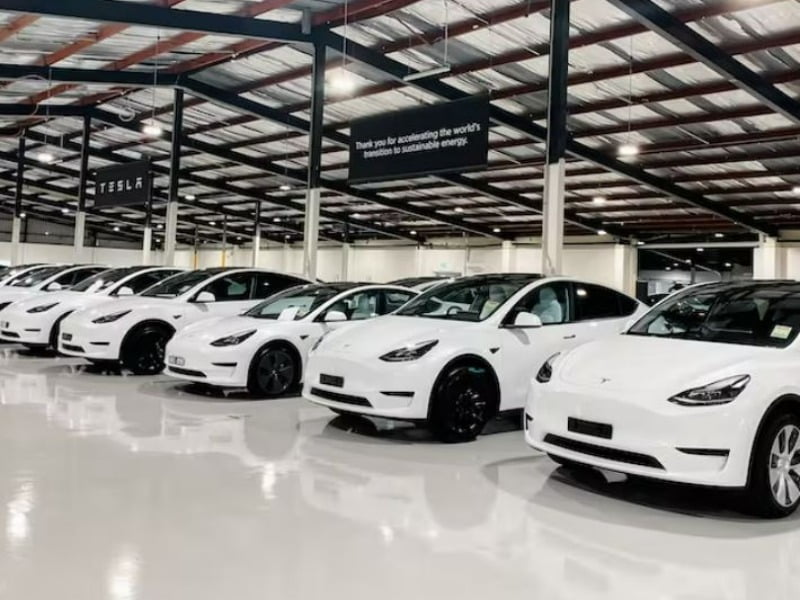Electric vehicles now make up just over 3 per cent of all new car sales in the country, with the Australian Capital Territory continuing to lead the way by proportion of sales.
Between January and September this year, 26,356 new plug-in electric vehicles (EVs) were sold, representing 3.38 per cent of all sales, according to the Electric Vehicle Council’s second State of Electric Vehicles report. This is a 65 per cent increase in the proportion of new vehicles sold that are plug-in electric, which includes hybrids.
The sales figures are 21.6 per cent greater than 2021 and 282.0 per cent greater than in 2020. Tesla vehicles, namely the Tesla Model 3 and the Model Y, still dominate the market, accounting for 33 per cent of EV sales. There are currently 95 plug-in electric car variants in Australia, of which 60 are battery EVs.

Of the 15 best-selling EV models, three are hybrids and 12 are battery EVs. The report notes the absence of the MG ZS EV and the plug-in hybrid Mitsubishi Outlander, which were the second and third most popular EV models in 2021, because new versions were unavailable in the first half of 2022.
Retaining its lead in the share of new vehicles sales that are plug-in electric is the Australian Capital Territory. The share of EV sales in the territory grew from around 5.5 to 9.5 per cent. Meanwhile, the Northern Territory continues to have the lowest proportional sales of EVs at 0.8 per cent.
EV sales between 2021 and the period to September 2022 have increased the most in New South Wales, with an increase of 84 per cent. The Australian Capital Territory is second with a 76 per cent increase, followed by the Northern Territory with a 75 per cent increase.
The approximate value of EV take up incentives is greatest in the Australian Capital Territory, at $6,708, however there are no rebates or subsidies on offer.
The New South Wales government has committed the largest pool of funding for vehicle purchase rebates. It includes 25,000 rebates at $3,000 a piece. As of July 31, 2,879 EV rebates had been claimed in New South Wales.
Similar, but fewer, schemes are being offered by the state governments of Queensland, South Australia, Victoria, and Western Australia.
The report notes that as of June 30, 2022, there are 2,147 public charging locations across the country.
State and territory EV policies were also evaluated in the report. The Northern Territory, South Australia, Tasmania, Victoria, and Western Australia, were all given scores of 5 out of 10 or less. The Electric Vehicle Council has given the federal government’s EV policies a score of 7/10.
The federal government is currently consulting on its EV strategy to improve affordability, supply, and uptake. It will consider opportunities for EV supply chain manufacturing, charging infrastructure rollout, fuel efficiency standards, and further incentives for take up.
There is also legislation for a fringe benefits tax exemption for zero and low emissions cars currently before the senate, with a senate committee report last month recommending it be passed.
Modelling by researchers at the Australian National University found that currently available long-range EVs could feasibly service the needs of Australians living in remote areas.
Do you know more? Contact James Riley via Email.

